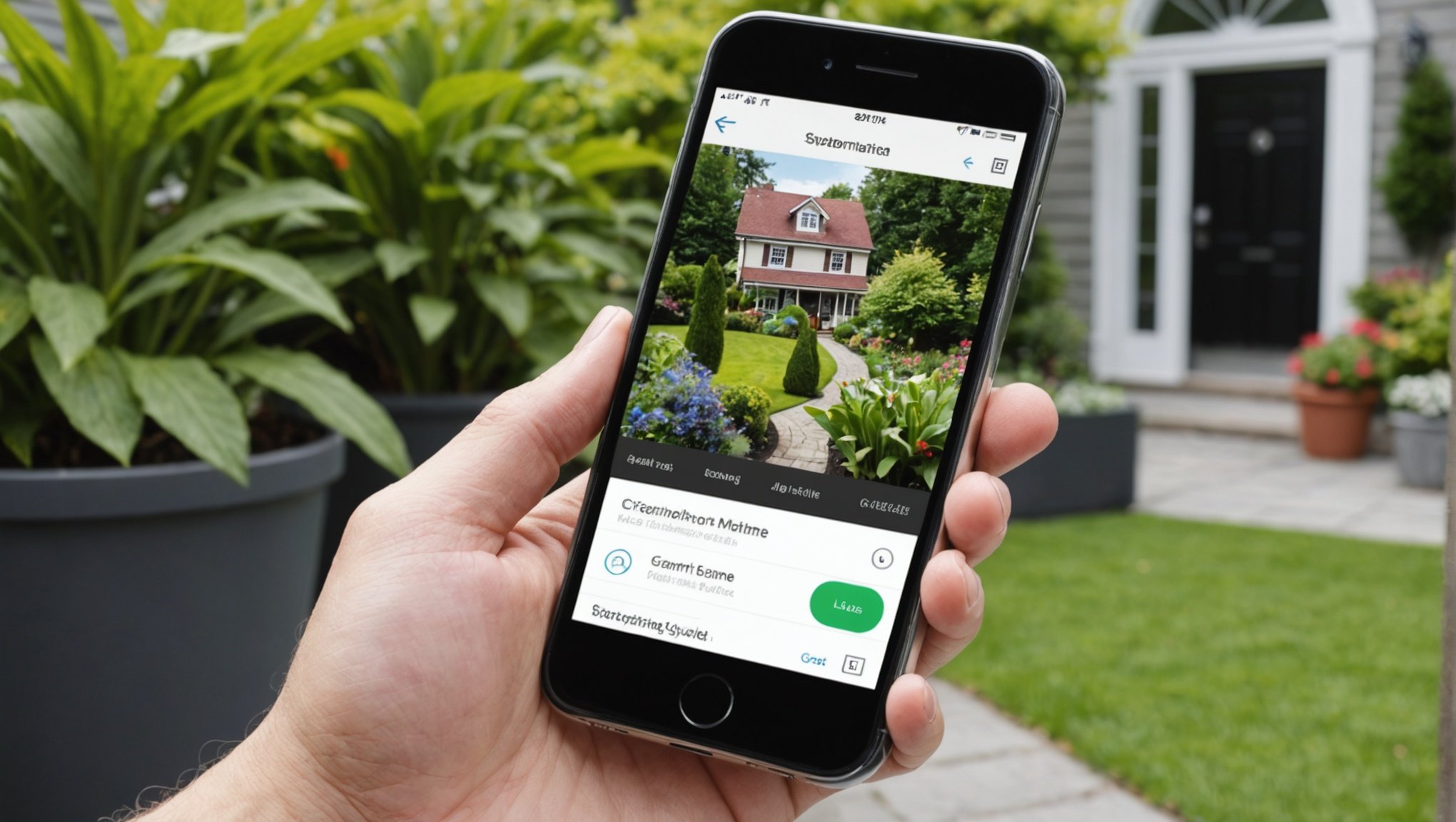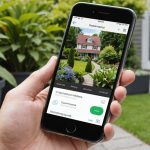In recent years, the fusion of technology and gardening has revolutionized the way we nurture our green spaces. With a few clever tweaks, you can transform your garden into a smart, self-sustaining paradise, all controlled from the palm of your hand. Today, we will guide you on how to use your smartphone to create an efficient and reliable smart home garden monitoring system. Imagine being able to maintain perfect soil conditions, monitor plant health, and even water your garden, all with a simple tap on your screen. Let’s delve into the world of smart gardening.
Setting Up Your Smart Home Garden System
The foundation of any smart home garden monitoring system lies in its initial setup. You will need a few essential tools and gadgets to get started. Foremost among these are smart sensors that can monitor various environmental factors such as soil moisture, temperature, humidity, and light levels. These sensors are crucial for providing real-time data about your garden.
Topic to read : What Are the Best Practices for Using Smartphones to Manage Smart Home Appliances?
When choosing sensors, opt for those compatible with your smartphone’s operating system. This will ensure seamless integration and easier management. Many modern sensors also come with Bluetooth or Wi-Fi connectivity, making the setup process relatively straightforward.
Once you have your sensors, the next step is to strategically place them in your garden. Ensure they are positioned where they can accurately capture the data you need. For example, soil moisture sensors should be buried near the roots of your plants, while temperature and light sensors should be placed in open areas that receive direct sunlight.
In the same genre : What Are the Steps to Set Up a Smart Home Surveillance System Using Your Smartphone?
After placing the sensors, you will need to download a dedicated gardening app on your smartphone. Many apps are available, offering various functionalities. Some popular ones include Gardena Smart System, GreenIQ, and Edyn Garden Sensor. These apps provide detailed insights and recommendations based on the data collected by your sensors.
With everything set up, your smartphone will now act as the central hub of your garden monitoring system. Through the app, you can track the health of your plants, receive notifications about environmental changes, and even control automated watering systems. Setting up your smart home garden monitoring system requires an initial investment of time and effort, but the benefits it offers are well worth it.
Monitoring Soil Conditions and Plant Health
Monitoring soil conditions is vital for maintaining a healthy garden. With smart sensors, you can keep a close eye on factors like soil moisture, pH levels, and nutrient content. These parameters play a crucial role in plant growth and overall health.
Soil moisture sensors, for instance, provide real-time data about the water content in the soil. This information is essential for preventing both overwatering and underwatering, which can harm your plants. By ensuring your garden receives the right amount of water, you can promote healthy root development and prevent issues like root rot.
In addition to moisture levels, monitoring soil pH is equally important. Different plants thrive in different pH ranges, so it’s crucial to maintain the appropriate pH level for each plant species in your garden. Smart sensors can help you identify any imbalances and adjust accordingly, ensuring your plants receive the optimal growing conditions.
Moreover, some advanced sensors can also detect nutrient levels in the soil. These sensors can provide valuable insights into the availability of essential nutrients like nitrogen, phosphorus, and potassium. By understanding nutrient deficiencies, you can take corrective actions, such as adding fertilizers or compost, to enhance soil fertility.
Beyond soil conditions, smart sensors can also monitor plant health. For instance, some sensors are equipped with cameras that can capture images of your plants. These images can be analyzed to detect signs of disease, pests, or nutrient deficiencies. By identifying issues early on, you can take prompt action to protect your plants and ensure their well-being.
Overall, smart sensors offer a comprehensive view of your garden’s soil conditions and plant health. By leveraging the data they provide, you can make informed decisions and create an optimal environment for your plants to thrive.
Automating Watering and Irrigation
One of the most significant advantages of a smart home garden monitoring system is the ability to automate watering and irrigation. Watering your garden manually can be time-consuming and may result in inconsistent moisture levels. With automation, you can ensure your plants receive the right amount of water at the right time, promoting healthy growth and conserving water.
Smart irrigation systems are designed to work seamlessly with your smartphone. These systems typically consist of smart controllers, valves, and sprinklers or drip lines. The smart controllers receive data from soil moisture sensors and weather forecasts, allowing them to make informed decisions about when and how much to water your garden.
By using the information provided by the sensors, the smart controller can adjust the watering schedule based on the specific needs of your plants. For example, if the soil moisture levels are already adequate, the system can skip a scheduled watering session to avoid overwatering. Conversely, if the soil is dry, the system can initiate a watering cycle to replenish the moisture.
Furthermore, smart irrigation systems can adapt to changing weather conditions. If rain is forecasted, the system can delay or reduce watering to avoid water wastage. This level of automation ensures your garden remains healthy while minimizing water consumption.
In addition to soil moisture sensors, some smart irrigation systems also integrate with weather stations. These weather stations provide real-time data on temperature, humidity, and rainfall, enabling the system to make more accurate watering decisions. By considering both soil conditions and weather patterns, the system can optimize irrigation and ensure your garden receives the precise amount of water it needs.
Automating watering and irrigation not only saves time and effort but also promotes water conservation. With a smart system in place, you can achieve a balance between providing sufficient moisture for your plants and minimizing water waste. This sustainable approach benefits both your garden and the environment.
Leveraging Data for Optimal Growth
Data is the backbone of any smart home garden monitoring system. The information collected by smart sensors provides valuable insights into various aspects of your garden, allowing you to make data-driven decisions that promote optimal plant growth.
One of the key benefits of leveraging data is the ability to identify patterns and trends. By analyzing historical data, you can gain a deeper understanding of how different factors influence plant health and growth. For example, you may notice that certain plants require more water during specific months or that certain areas of your garden receive less sunlight. Armed with this knowledge, you can tailor your gardening practices to meet the specific needs of your plants.
Data can also help you identify potential issues before they become major problems. For instance, if the soil moisture levels consistently remain low despite regular watering, it could indicate a problem with the irrigation system or soil drainage. By addressing these issues promptly, you can prevent stress and damage to your plants.
Furthermore, data-driven gardening allows you to experiment and fine-tune your approach. By making small adjustments and monitoring the results, you can determine the most effective strategies for promoting plant growth. For example, you can test different watering schedules, fertilizer applications, or planting arrangements to see which yields the best results.
In addition to improving plant health, data can also enhance your gardening experience. Many gardening apps provide detailed reports and visualizations, making it easy to track your progress and see the impact of your efforts. These insights can be highly motivating and encourage you to continue refining your gardening practices.
Overall, leveraging data is a powerful tool for optimizing plant growth and maximizing the potential of your garden. By harnessing the information provided by smart sensors, you can create a thriving, sustainable garden that brings joy and beauty to your home.
As we’ve explored, using your smartphone to create a smart home garden monitoring system offers numerous benefits. From setting up sensors and monitoring soil conditions to automating watering and leveraging data, these technologies empower you to take control of your garden with ease and efficiency.
By embracing the future of gardening, you can ensure your plants receive the optimal care they need to thrive. Smart sensors provide real-time insights into soil moisture, pH levels, and nutrient content, while automated irrigation systems ensure consistent and efficient watering. With data-driven gardening, you can make informed decisions and create an environment that promotes optimal plant growth.
Ultimately, a smart home garden monitoring system simplifies the gardening process, saving you time and effort while enhancing the health and beauty of your garden. So why not take advantage of the latest technology and transform your garden into a smart, sustainable oasis? With a few simple steps, you can enjoy the benefits of a thriving garden right at your fingertips.











